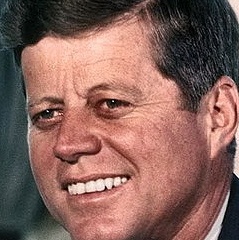As John F. Kennedy closed his inauguration address on that blustery January day in 1961, he made the famous challenge, “Ask not what America will do for you, but what together we can do for the freedom of man.” Evaluating this address uncovers how to prepare words that will resonate for decades.Look for trusted advisors
Every president has used speech writers. Even George Washington had help with his first address to congress from James Madison. The key is building a group of trusted advisors with a foundation of shared beliefs and ideologies. Theodore Sorenson served as a special counsel to JFK, much more than just a speechwriter.
Study what has worked
Kennedy read many past inaugural addresses and chose his favorites. In fact, Sorenson was instructed to research the word counts on high impact speeches from Roosevelt, Wilson and Eisenhower. These ranged from 1,281 words to 1,730 words, so it is no surprise that Kennedy delivered the fourth shortest inaugural address in history at 1,347 words in about 15 minutes.
Call for ideas
Two days before Christmas 1960, Sorenson sent a query to 10 leading thinkers of the day. The telegram requested recommendations about themes and language. Among those offering advice was Phillip Graham, publisher of the Washington Post, who drew on Lincoln’s thoughts to recommend a closing.
Look for back-of-the-envelope ideas
Drafting the 35th president’s inaugural address used the technology of the day – dictation, transcription and typewriters. I bet even the office of the president-elect is not above capturing a back-of-the-envelope idea. Using the imagery of a trumpet in the narrative was inspired by a Bible passage as was jotted down on the reverse side of a random telegram.
Connect with you audience
On Inauguration Day, Kennedy referred to a 14-page reading copy prepared on a large print typewriter. JFK, a well practiced orator, spoke in the cadence of Lincoln and Churchill – slowly. He made on the fly changes to better connect with his audience by simplifying imagery and creating a stronger tempo through repetition of certain words and phrases.
These five lessons can be employed for any speech or presentation.
Keep up-to-date with Fast Track Tools by subscribing to our blog so you will be the first to know when we run a special, free offer.
photo by blatantnews
